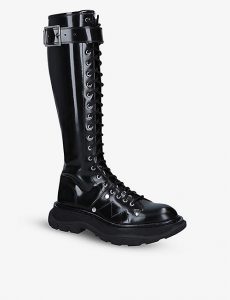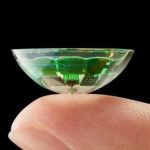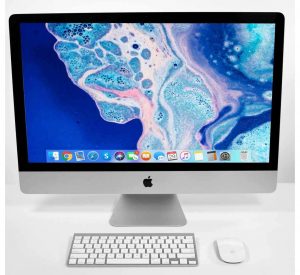What Ingredients Should Be Avoided When Choosing a Beauty Product
When choosing a beauty product, it is important to read the ingredients label carefully. There are a number of chemicals that can harm your skin and eyes. These chemicals include preservatives, which are additives to a product that slow down the growth of bacteria and prolong the shelf life of the product. They can also prevent the formation of infections on the skin and eyes. Some cosmetics even use self-preserving plant oils and extracts to prevent bacterial growth. Another dangerous component of a beauty product is the fragrance. Many fragrances contain chemicals, so you should avoid them.
Parabens
Parabens are synthetic chemicals that can disrupt hormone levels in the body. These chemicals mimic reproductive hormones and can alter the body’s natural hormone production. It is best to avoid paraben-containing products if you want to stay healthy. Instead, opt for paraben-free brands.
While parabens are safe for use in cosmetics, their effects on the human body are still unknown. To combat the dangers of parabens, activists are pushing for more regulation in the beauty industry. Some cosmetic companies have already removed parabens from their formulas. One example is the company SmartMouth, which is paraben-free. This paraben-free mouthwash claims to eliminate bad breath for 24 hours, and it is made with zinc ion technology.
Parabens mimic estrogen in the human body, which can disrupt hormone balance and interfere with reproductive activities. They can easily be absorbed through the skin, and their cumulative effect can accumulate over time. Exposure to parabens may also contribute to the development of breast cancer in women. Furthermore, they are known to cause allergic reactions, so it’s best to avoid them if possible.
Although the FDA hasn’t banned all parabens in beauty products, it has imposed new rules to make it clear whether or not a product contains them. While parabens are generally safe, health advocates are pushing for the inclusion of alternatives on labels. In the meantime, consumers should always read labels and avoid products with parabens.
Chromium
Chromium is a heavy metal found in many cosmetics and personal care products. While it is an essential trace element, high levels can be harmful to the skin. It is an irritant and may cause allergic contact dermatitis. Cosmetic regulations do not set limits for chromium in products, however. In addition to its toxicity, chromium may also be carcinogenic when it reaches high concentrations.
Chromium is present in cosmetic products in two forms. It can be present as a green pigment called Chromium Oxide Green. Chromium hydroxide green is a chemical compound synthesized from mineral resources. It is allowed to be used in products for external use, but is prohibited for use on lips. It can be found in hair coloring products, skin care products, bath products, and makeup.
Chromium is used in a variety of cosmetic products as preservatives, ingredients, or dyes. Different types of chromium may cause different health effects. Hexavalent Chromium (Cr+6) is corrosive and may irritate skin. It can also damage the kidneys and cause bone deformities. In addition, it can cause allergic reactions and ulcerations. It may also cause bronchospasms.
The amount of chromium in beauty products varies greatly. The maximum permissible level is one milligram per gram. But there are some brands that contain chromium-free products.
Emulsifiers
Emulsifiers are additives in beauty products that help to blend different kinds of fluids and oils together. These substances are commonly used in hair care and skincare products. They make the blends more stable and help them maintain a longer shelf life. There are many types of emulsifiers available, including organic ones.
Emulsifiers can be classified as two main types, the anionic type and the cationic type. Anionic emulsifiers have hydrophilic head groups that are negatively charged, while cationic emulsifiers have a positive charge. Both types of emulsifiers are effective in making mixtures homogeneous, and some are made of natural ingredients.
Xylose is a naturally-derived emulsifier that is very stable. It is ideal for creating emulsions with high oil phase content. It is also known as Cetearyl Alcohol. This emulsifier is accepted by many organic and environmental certification organizations, including Ecocert.
PEG-free emulsifiers are commonly made with plant oils and do not require silicone oil or paraffins. These emulsifiers do not require the HBL system and are used in all-natural and organic cosmetics. They can even be made without the help of hydrophilic emulsifiers.
Co-emulsifiers can make an emulsion more stable by thickening it. They can also help prevent the separation of oil and water.
Water
Water is the primary ingredient in most beauty products. However, water is a breeding ground for bacteria, fungi, and other microorganisms, so it requires special attention in the formulation process. The solution is to concentrate and reduce water content to the minimum, or eliminate it altogether. This helps to preserve the product longer, and prevents the need for chemical preservatives. Powdered beauty products require only small amounts of water to be active, compared to liquid versions.
The water used in beauty products should be pure, free of toxins, and deionized. Ensure that it meets the standards of European and American pharmacopeias for cosmetics. It should also be free of ions, which could interfere with surfactants. Moreover, water from pharmaceutical and cosmetic suppliers should be accompanied by an analysis certificate.
In addition to its anti-irritant effect, water is a great solvent for other ingredients. Certain oils may be very potent, and can cause allergic reactions. However, water as an ingredient in beauty products rarely causes any reaction in humans. It also helps everyone benefit from the effects of various ingredients. Water is one of the most commonly used ingredients in beauty products.
The water content in beauty products varies, but is generally between 60 and 85%. Lotions and shower-gels contain up to 95% water. Water can be in the form of either a solid or gas, depending on the type of Beauty product. Some cosmetics are fatty and cannot use water, while others are able to use water only in liquid form. Water used in beauty products can affect the body and the environment, which is why water is important in cosmetics.
Skin-brightening ingredients
When choosing a brightening skin care product, look for a variety of brightening ingredients. These ingredients can help you achieve healthy-looking skin and fight pigmentation. These ingredients should also be gentle enough to be gentle on sensitive skin. Niacinamide and other naturally brightening plant extracts are common among brightening ingredients. Vitamin C-rich camu-camu and dolwoe extract are good choices, too.
Other ingredients to look for in a skin-brightening product are lactic acid, melanozyme, and retinol. You can also find kojic acid and vitamin B3 (niacinamide) in these Beauty product. These ingredients can effectively lighten dark spots and even out skin tone without irritation or side effects.
Hydroquinone is another ingredient to look for when choosing a skin-brightening product. This ingredient works to treat hyperpigmentation on the skin by inhibiting melanin production. Hydroquinone can also cause irritation and drying of the skin, so it is important to look for Beauty products that contain this ingredient. Fortunately, there are plenty of natural, skin-brightening ingredients that are safe for sensitive skin.
Many of these ingredients also help reduce hyperpigmentation. Vitamin C, for instance, reduces the appearance of dark patches on the face. This ingredient works by inhibiting the enzyme tyrosinase, which produces melanin. It also brightens the skin and is an excellent antioxidant.
PFAS chemicals
Consumers can avoid PFAS chemicals by checking the ingredient lists in beauty products. The Environmental Working Group’s Skin Deep database contains ingredient lists and safety ratings of personal care products. It has identified over 300 beauty product with PFAS chemicals. The EWG also advocates for legislation banning these chemicals from cosmetics.
The PFAS chemicals are still not regulated in Canada or the United States, making it difficult to find out how many Beauty products contain them. This makes it difficult to make a definitive conclusion about the effects of PFAS on our health. In addition, labels can be misleading. In Canada, the Food and Drug Administration does not regulate the presence of PFAS in beauty products.
The PFAS chemicals in cosmetics are highly persistent. Researchers have found that PFAS can cling to the skin for years and can be transferred to other parts of the body. As a result, it is easy to unknowingly expose yourself to these chemicals when you use make-up products. This is because PFAS can enter the body through your skin and even your tear ducts.
The presence of PFAS chemicals in cosmetics has been linked to serious health risks. The chemicals are toxic when absorbed through the mucus membranes in the mouth and tear ducts. As a result, lipstick wearers may accidentally swallow the chemicals in their lipstick. Moreover, when these chemicals are washed off the skin, they end up in our water supplies.















